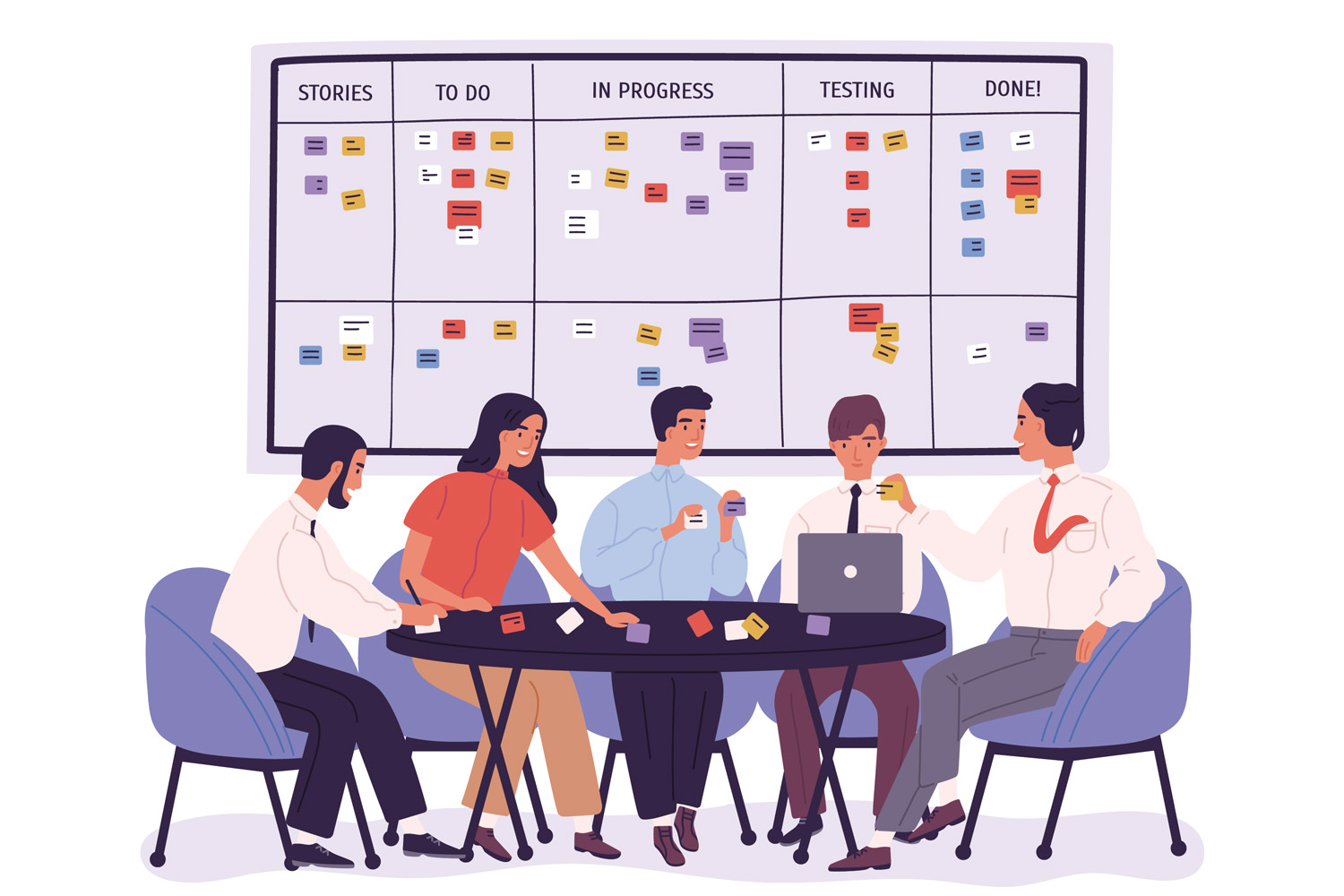Project Management has become an increasingly key activity in both large and small companies.
Processes and workflows need to be increasingly agile, waste-free and, above all, improvable: constant progress in terms of efficiency, quality, innovation and productivity is a necessity to survive in today’s work environment.
By managing projects in the best possible way, it’s easier to identify what works and what is inefficient, and to implement all those changes that allow the company to pursue its objectives.
The Kanban method was developed as a methodology to improve production efficiency in lean production, but it’s also adopted by those involved in project management. The final goal is to align production capacity with demand, thus avoiding both overproduction and unnecessary waiting time between one process and another.
Here are a few tips for understanding how it works and its advantages.
The origins on the Kanban method
The term Kanban comes from the combination of two Japanese words, “Kan” 看meaning “sign” and “Ban” 板meaning “blackboard”. Kanban in the 1600s were the posters that shopkeepers in busy streets used to advertise the day’s offer and anticipate the next day’s promotion, in a direct and concise manner.
In the 1940s, an actual theory was created, based on Toyota‘s just-in-time method: only what is needed, when it’s needed and in the amount needed must be produced. The result is lean production, which in the 2000s was translated by many scholars into agile project management methods.
The origins on the Kanban method
The term Kanban comes from the combination of two Japanese words, “Kan” 看meaning “sign” and “Ban” 板meaning “blackboard”. Kanban in the 1600s were the posters that shopkeepers in busy streets used to advertise the day’s offer and anticipate the next day’s promotion, in a direct and concise manner.
In the 1940s, an actual theory was created, based on Toyota‘s just-in-time method: only what is needed, when it’s needed and in the amount needed must be produced. The result is lean production, which in the 2000s was translated by many scholars into agile project management methods.
The 4 core principles and 6 core practices of the Kanban method
In order to implement the method in one’s own work it’s necessary to learn the basics. In this case we speak of “core principles” and “core practices”.
There are four basic core principles.
- Start only with reliable information.
- Apply incremental, not radical improvements.
- Respect current roles and processes that generate value.
- Encourage ‘leading’ behaviour, regardless of the person’s hierarchical level.
The principles become real using 6 core practices.
- Visualize the entire workflow at all times, from what still needs to be started to completed tasks.
- Limit Work in Progress (WIP), focusing on what needs to be done at a specific moment in time.
- Manage the work process through continuous improvement and modification.
- Be transparent with all members of the team about the policies that must be implemented to complete the processes.
- Constantly give and receive feedback to improve the project.
- Improve trust between team members and develop team spirit.
How to apply Kanban in the office and online
Whether in a physical or virtual place, the method is always developed graphically through the so-called Kanban Board, a blackboard or table divided mainly into four columns.
- Backlog / Ideas – This column includes everything that could be done, but which is still under consideration.
- To do – This is where approved project tasks are allocated, usually with a deadline.
- Ongoing – The main column shows everything that is ongoing.
- Done – The last ‘window’ shows everything that has already been completed.
A ‘Testing’ column can be added to these groups, especially in the IT field, where all activities that require testing are displayed.

When all the people in the team share the same room, the Kanban method develops in a very simple way: the columns are drawn on a blackboard and the tasks are represented by very simple post-it notes, which are moved as the project progresses. In some cases, the colour of the post-it note is linked to the person in charge or to the mini-team.
In recent years, the Kanban board has made its appearance online due to the presence of collaborators in various different locations and new ways of working such as hybrid working. Among the most used software we can find Trello, Asana and Wrike.
Our advice? Take advantage of virtual tools as much as physical ones: viewing the board from your desk is a great way to keep everything under control.

